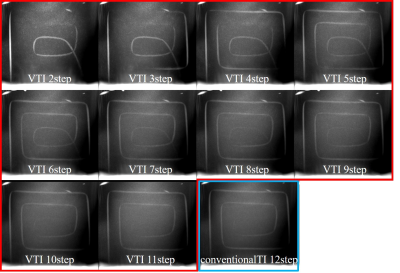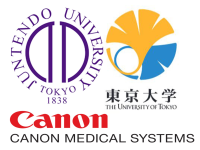Toshiya Akatsu1, Haruyuki Fukuchi2,3,4, Kei Fukuzawa4, Nao Takano1, Yutaka Ikenouchi3, Michimasa Suzuki3, Kohji Kamagata3, Akihiko Wada3, Osamu Abe2, and Shigeki Aoki3
1Department of Radiology, Juntendo University Hospital, Tokyo, Japan, 2Department of Radiology, Graduate School of Medicine, University of Tokyo, Tokyo, Japan, 3Department of Radiology, Juntendo University Graduate School of Medicine, Tokyo, Japan, 4Department of Radiology, Toranomon Hospital, Tokyo, Japan
1Department of Radiology, Juntendo University Hospital, Tokyo, Japan, 2Department of Radiology, Graduate School of Medicine, University of Tokyo, Tokyo, Japan, 3Department of Radiology, Juntendo University Graduate School of Medicine, Tokyo, Japan, 4Department of Radiology, Toranomon Hospital, Tokyo, Japan
We
implemented the new Variable TI 4D UTE-MRA in order to improve the visibility
of hemodynamic flow. It was found that a 50 % reduction of TI steps increases 50 %
of signal from the flow volume without impairment of structural information in a
numerical simulation and a phantom study.

